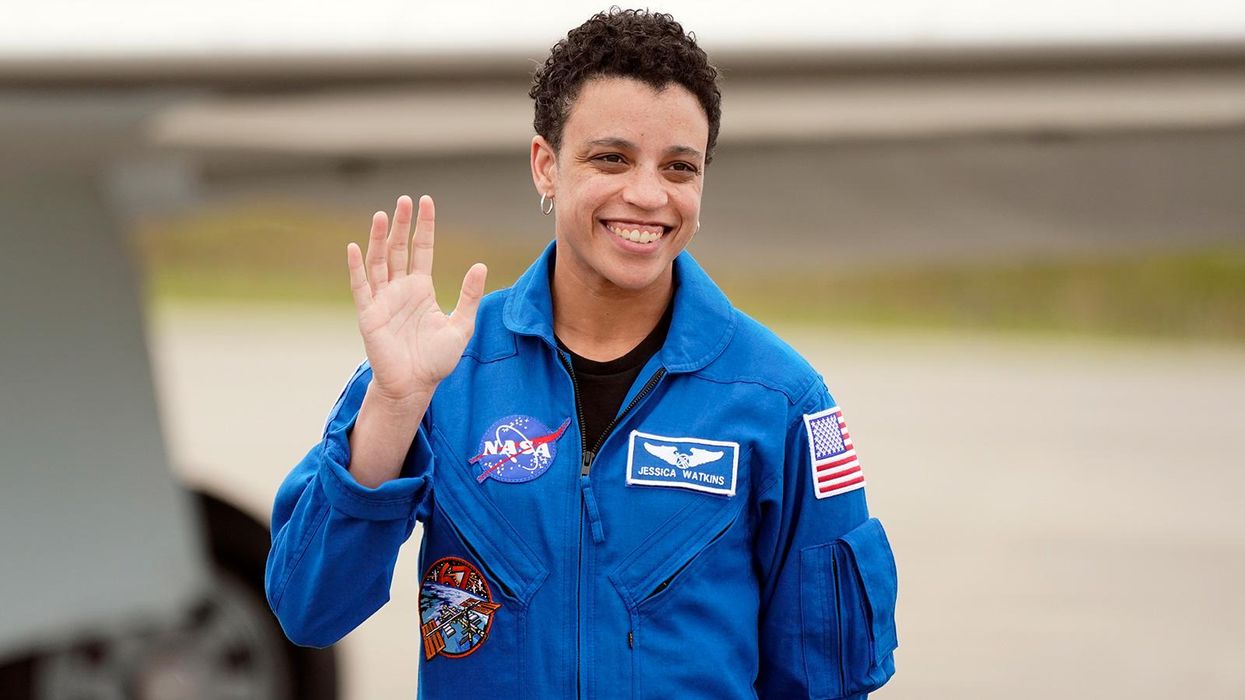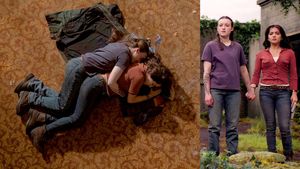(CNN) — Jessica Watkins is a self-described "rock nerd" with a doctorate in geology. So when she boarded her first mission to space as a member of NASA's astronaut corps, she brought along photos of family and friends — and some rocks.
"Of course, I had to," Watkins, 34, said in an interview during her six-month stay on the International Space Station, launching with her SpaceX Crew-4 crewmates in April before returning to Earth in October.
Her journey made history. Watkins became only the fifth Black woman ever to travel into space and the first to join a space station expedition. She became an official crew member of the orbiting laboratory that has hosted more than 260 people in its nearly 23-year history.
As a young girl, Watkins dreamed of traveling to space and even wrote a poem, called My Little Astronaut, describing that ambition in grade school, her mother told CNN affiliate WESH-TV in Orlando ahead of her daughter's mission.
That desire became a reality as result of the zeal she brought to her academic pursuits, Watkins said in a January interview. And Watkins hopes she can instill that enthusiasm for knowledge into young people who aspire to be like her.
"One of the most important things to be able to share is just the importance of dreaming big," Watkins said, "and really being able to find your path — find something that you're passionate about."
She previously described her love of geology, noting it allows her to function "as a detective."
"You're looking at different puzzle pieces, you know, [in] all kinds [of] different places," Watkins said in a NASA video. "And you're trying to bring those puzzle pieces together to get a full story, a full history of what has happened in a particular place."
Diverse representation remains an issue in the space program, but opportunities for women and people of color are growing. Watkins' astronaut class, selected by NASA in 2017, is one of the most diverse in the space agency's history, and she hopes she can leave the door open for others.
"I see places where I wish there was more representation, but I definitely felt the impact of the representation that did exist," Watkins said. It was valuable "to see people who looked like me who had backgrounds and experiences like me, in the roles that I aspired to, and contributing in the ways that I aspired to contribute."
She counts astronaut Mae Jemison, the first Black woman to travel into space, as a key figure, and she drew inspiration from her parents and family members as well as teachers and mentors she met along the way.
"It will definitely be a priority for me," she said, "to be able to kind of reach out and connect with the community that I hoped to do a good job of representing."
Journey to space
Watkins grew up in Lafayette, Colorado, and received her undergraduate degree from Stanford University. Initially, she studied mechanical engineering, hoping it would help her pursue her astronaut dreams.
But that "was just not my passion," she said in a NASA broadcast from space. "It was just not something that got me out of bed every morning."
But flipping through Stanford's course catalog, she discovered geology classes about searching for habitable planets that sparked her interest.
"Particularly the idea of planetary geology, the idea of being able to study rocks on the surface of another planet," she said, "just absolutely enamored me and still does to this day."
At Stanford, Watkins became a standout rugby star. As a sophomore, she scored the winning goal in Stanford's 2008 national title game. As a result, her grandmother told CNN affiliate WESH she initially thought Watkins' destiny was to be one of game's best players.
On reflection, Watkins said, immersing herself in the dynamics of a team sport as well as her studies prepared her for the grueling requirements of spaceflight.
"The international cooperation that is required to do what we do up here every day is exactly like that," she said.
Watkins spent two years in basic astronaut training and another two years preparing for her space station journey. Boarding the SpaceX rocket, which carried her and three crewmates into orbit, for the first time was a pinch-me moment. But the months of dedicated practice made it also seem routine.
"It is this kind of exciting combination of emotions, as you're sitting there on the rocket getting ready to launch," Watkins told CNN. "But really, the launch itself is just amazing. And by the time the launch itself is actually occurring, you're fully focused on the operational side of things."
While in orbit
Throughout their time on the space station, Watkins and her crewmates worked closely with Russian cosmonauts, a task with increased geopolitical significance as the war in Ukraine strained relations between the United States and Russia.
"We are able to have dinner together, spend time together with them, and we really become family with them," Watkins told CNN. "We all are there to successfully and safely execute our missions. ... We really have that common ground."
Watkins had her hands in hundreds of research projects on the space station, including a botany investigation focused on growing new crops in space. Food being an ever-important topic for astronauts, Watkins also became known during her stay for inventing a hamburger taco topped with macaroni and cheese — dubbed the "Wattyburger."
Among the surprising experiences in space, Watkins found the microgravity environment was extending to her dreams within a few weeks of her stay on the station.
"They were not about being in space, but they took place in space," she said. "You know how dreams are — you kind of remember, 'Oh, yeah, we were definitely floating, so we must have been in space. But since being back here on Earth, I don't think that I have dreamed about being in space. So I guess my brain and body have figured it out."
To pass the time when research projects or routine maintenance weren't overwhelming her calendar, Watkins said she stared out the space station's nook of windows, called the cupola, to catch views of Earth whisking by.
"Certainly for me, as a scientist and as a geologist in particular, being able to look out the window and see places that are of geologic interest — even field sites that I had visited or done research previously — to be able to see them from that perspective, from a planetary perspective, was really quite amazing."
On weekends, Watkins said the crew would use a projector to screen movies. Her favorite — and perhaps the most relevant — was the 2015 Matt Damon film, "The Martian," she said. Watkins' doctoral dissertation at UCLA focused on the Martian terrain, analyzing puzzling landslides seen on the planet's surface and how water may have contributed to them.
"I thought they did a great job [in the movie]," she said, "with the rocks in particular."
What the future holds
Watkins' unbridled love of geology extends to her ambitions within NASA's astronaut corps. Asked what her dream mission would be, Watkins told CNN she wants to travel to Mars and study some of the landmarks she's only been able to analyze through data collected by satellites and Martian rovers.
"To go to those areas that we have studied — and that I, in particular, have studied — and be able to get boots on the ground there and compare that kind of field geology with [remotely collected] data ... will be pretty amazing," she said.
Such a feat is not out of the realm of possibilities for Watkins. As a member of NASA's Artemis team, she's part of a group of astronauts who could be selected to join upcoming crewed missions to the moon, and, perhaps, eventually to Mars.
The Artemis program is still in its infancy, but NASA soon is expected to select crew members for an upcoming journey around the moon.
Watkins hasn't lobbied NASA for a spot on that mission or any other specific assignments. "It doesn't work that way," she noted.
But the Artemis program is offering her and her colleagues an exciting future — one that promises to be filled with people who better represent the general public.
"We are an amazing, diverse [astronaut] corps right now," Watkins said. "And so whoever ends up being the faces of [the Artemis II] mission, we are all just excited to really be a part of it and to contribute in the ways that we can all contribute."
The-CNN-Wire
™ & © 2023 Cable News Network, Inc., a Warner Bros. Discovery Company. All rights reserved.
- Clarice Phelps, First Black Woman to Help Discover an Element, on How She Got a Seat at the Periodic Table ›
- Exclusive: Physicist Jess Wade on Including More Women and Minorities in STEM ›
- Meet the Diverse Crew of NASA's First Moon Mission in 50 Years ›


















































